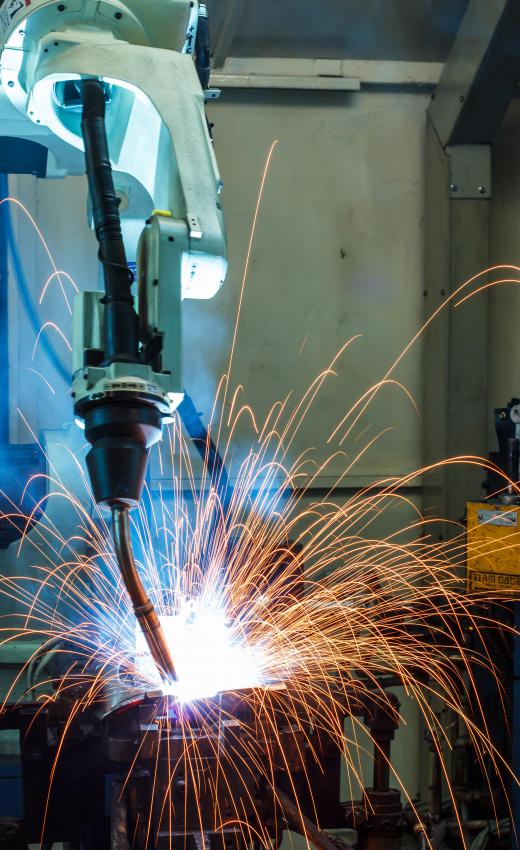A gantry robot is also known as a cartesian robot. It looks very different from the popular image of a robot. It is a stationary robot and typically contains a minimum of three elements of motion. In this case, each motion refers to linear motion in a single direction.
In a gantry robot, each of these motions are arranged to be perpendicular to each other and are typically labeled X, Y, and Z. X and Y are located in the horizontal plane and Z is vertical. Think of X and Y was the width and length of a box and Z as the height of the box. The interior of this box is referred to as the working envelope of the gantry robot. A gantry robot can move things anywhere within this envelope or perform some operation on an item within the envelope.

A typical application for a gantry robot is the assembly of a device. A gantry robot that performs this action is also referred to as a pick and place robot. Components required for the device are somehow brought into the working envelope of the gantry robot, and the gantry robot picks up each component and attaches or places it on the device being assembled. The device being assembled must also be within the working envelope of the gantry robot. Grippers of various types can be bolted to the end of the Z direction motion to assist in grasping the parts. Rotating motions can also be added to both the Z direction motion and the working envelope to allow for greater part manipulation.

Another typical application of a gantry robot is to perform some type of action on a part. The part must be placed within the working envelope, and the gantry robot can be programmed to weld, drill holes, or perform various other operations on the part. Rotary motions and appropriate tools are added to the gantry robot to allow it to perform its required function.
Gantry robots have several advantages over the more popular varieties of robots. Gantry robots can be made very large, filling an entire room if necessary. Gantry robots typically have much better position accuracy than their competitors.
Position accuracy refers to how close the robot can place a part to the instructed location. Gantry robots place parts exactly where programmed. This is why gantry robots are usually used for pick and place applications. Gantry robots are easier to program with respect to motion than are other robots. If the part needs to be moved from point (3,6,9) to point (4,2,8), this is simply a move of 1 unit in the X direction, -4 units in the Y direction, and -1 unit in the Z direction.
Gantry robots also have a disadvantage in that they are stationary. Everything needs to be brought into the working envelope and removed from the working envelope when completed. A gantry robot cannot go to the part; the part must come to the gantry robot.
